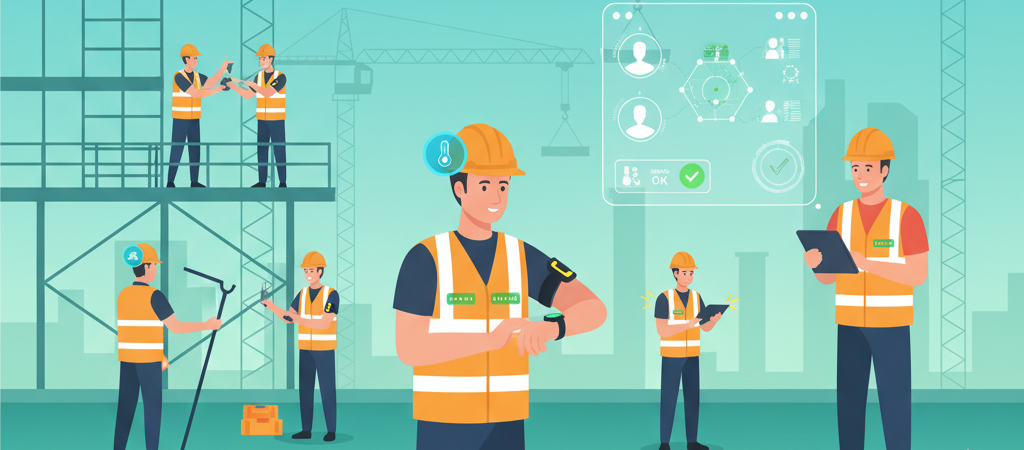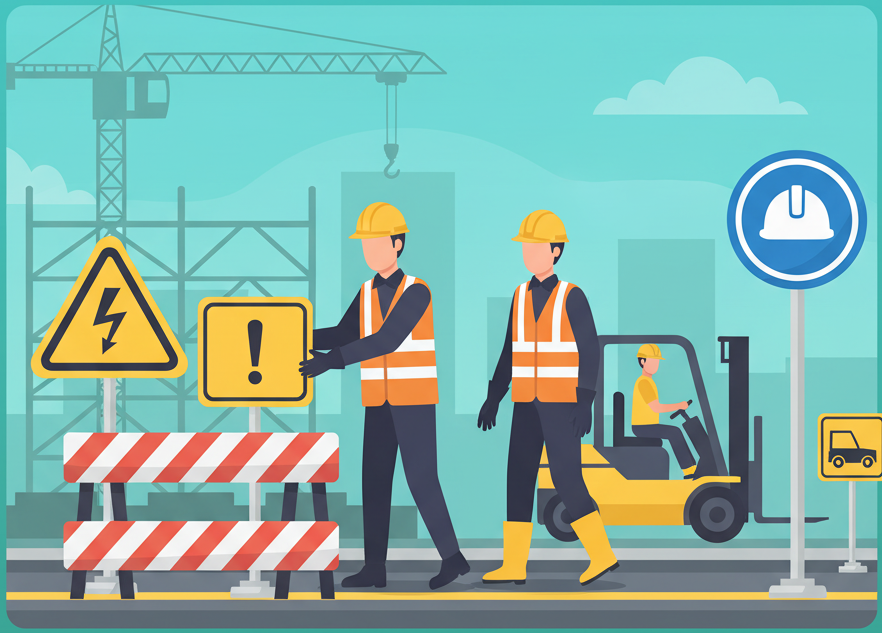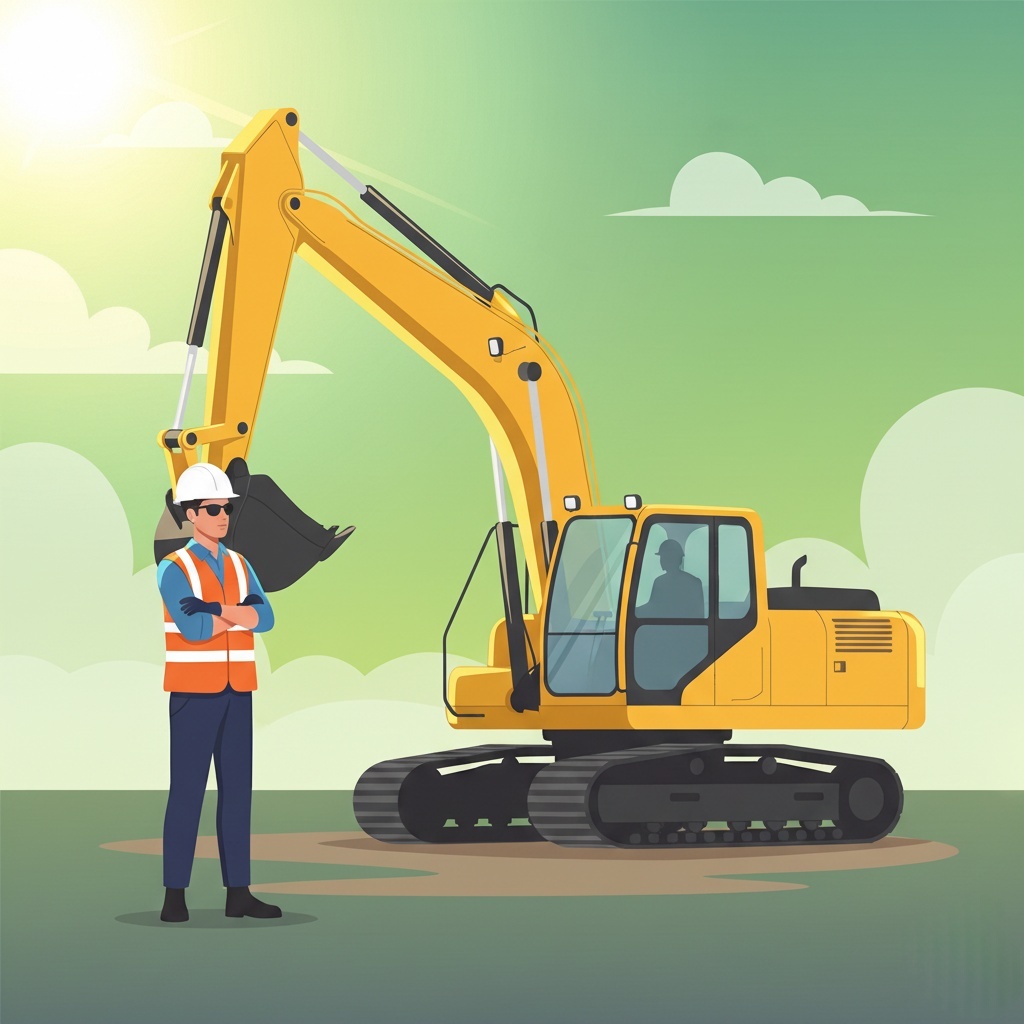Worksite safety is evolving fast, and new technology is helping protect workers like never before. Wearable safety gear isn’t just about hard hats and steel-toe boots anymore—it’s about smart devices that can detect hazards, monitor your health, and even help prevent accidents before they happen.
From helmets with built-in cameras to sensors that track fatigue, these innovations are making tough jobs safer and more efficient. Here’s a deeper look at the latest wearable safety solutions being adopted in industrial and construction settings, along with the benefits, challenges, and real-world impact.
Why Wearable Safety Tech Matters: The Big Picture
Before diving into devices, it helps to understand the context. The industries that most commonly use wearables—construction, manufacturing, warehousing—are among the highest in injury and fatality rates. In 2022 alone, workers in warehousing, manufacturing, and construction experienced over 700,000 nonfatal injuries and more than 2,000 fatalities.
Musculoskeletal injuries (back, shoulders, repetitive strain) are a major cost. For instance, in 2021, employers in manufacturing and warehousing spent at least $17.7 billion dealing with those injuries.
Wearables aim to shift safety from reactive (responding after incidents) to proactive (detecting or preventing before harm occurs). They bridge the gap between human senses, equipment, and data systems.
Yet, although many wearables show promise, published evidence of large-scale, long-term safety improvements is still relatively limited.
Still, the momentum is growing. The global construction wearables market is expected to expand rapidly, and “helmets” are already one of the top segments—especially as more devices embed sensors and connectivity.

Key Wearable Technologies on the Job Site
Here’s a breakdown of the main categories of wearable safety devices and how they’re being used (or researched) today:
1. Smart Helmets: More Than Just Head Protection
Smart helmets represent one of the earliest and most visible applications of wearable tech in construction. Unlike conventional hard hats, these come packed with sensors, connectivity features, and sometimes augmented reality (AR).
Common capabilities include:
Accelerometers & gyroscopes to detect falls or sudden impacts
Temperature, humidity, and gas sensors to monitor ambient conditions
Vital sign sensors (e.g. heart rate, body temperature) to detect fatigue or heat stress
Cameras and AR displays to overlay digital information (blueprints, safety warnings) in the wearer’s field of view
Communication modules (Bluetooth, Wi-Fi) to send alerts or video feed to supervisors
Smart helmets improve situational awareness by providing workers with real-time data on structural integrity, temperature changes, or equipment status, helping reduce incidents like falling object injuries or unforeseen hazards.
One study prototype describes a helmet equipped with accelerometer, gyroscope, temperature, heart beat, MEMS, and ultrasonic sensors. The system sends alerts via Bluetooth to a supervisor’s mobile app.
Challenges & trade-offs:
Higher cost compared to traditional helmets
Battery life and charging logistics
Comfort, weight, and field-of-view constraints
Data integration: sensor data must tie into management systems to produce value
Worker acceptance and concerns about monitoring or surveillance
2. Biometric & Physiological Sensors
These wearables track the body’s internal metrics to alert when something is off:
Heart rate monitors detect abnormal heart rhythms or exertion beyond safe levels
Skin temperature or core temperature sensors help flag heat stress or hypothermia
Hydration sensors or sweat composition sensors (still in emerging research)
Fatigue/alertness sensors, sometimes combining motion data and biometrics
Wearable patches or vests that monitor multiple vitals simultaneously
By alerting to early signs of heat exhaustion, overexertion, or dehydration, these systems can help preempt accidents. Some advanced systems are now being trialed underground (e.g. mining) or in extreme environments.
One recent safety technology fact sheet notes that wearables are increasingly used to monitor vital signs to prevent incidents in hot or physically intensive settings.
3. Smart Glasses & Heads-Up Displays
Smart glasses are designed to provide hands-free access to data:
View project drawings, digital models, or safety protocols as overlays
Live video calls or remote assistance (supervisors can see what the worker sees)
Shortcut commands or alerts visible in the peripheral vision
Heads-up notifications on hazards, safety warnings, or task instructions
This kind of tool is particularly valuable when you need to reference plans while also maintaining situational awareness.
Challenges include battery size, display clarity in bright sunlight, and user comfort (especially with safety eyewear integration).
4. Hazard Detection & Environmental Sensors
These wearables monitor conditions around the worker:
Gas sensors / air-quality monitors track hazardous atmospheres (CO, VOCs, particulates)
Noise exposure monitors warn when sound levels exceed safe thresholds
Dust sensors especially important in demolition, tunneling, or concrete work
Proximity sensors or geofencing wearables to keep workers out of dangerous zones (e.g. crane swing, excavation edges)
Real-time alerts from these sensors can trigger immediate action—evacuation, respirator use, or alarm escalation.
5. Exoskeletons & Assisted Support Devices
Exoskeletons are mechanized wearables that help support or amplify worker motion. They target musculoskeletal strain and repetitive lifting tasks:
Passive exoskeletons use springs or mechanical systems to offload load
Powered exoskeletons provide motorized assistance, particularly in lifting or overhead tasks
Assistive gloves or arm supports reduce fatigue when handling tools or repetitive motions
Laboratory studies generally show exoskeletons reduce muscle strain in controlled environments.
However, according to a GAO report, real-world deployment has yielded limited public evidence of reduced injury rates—largely because studies have been short-term and many workplace variables are at play.
One key finding: musculoskeletal injuries cost employers billions annually, which gives exoskeletons strong appeal if they can deliver on safety benefits.
6. Wearable Monitoring & Alert Systems (Clips, Bands, Vests)
Not every wearable has to be “high tech.” Many use lightweight clips or bands to monitor basic but critical metrics:
Triax Spot-r Clip is one example: this device detects slips, trips, and falls and sends alerts to supervisors.
Workers can push a button to report unsafe conditions
The system also supports evacuation alerts and logs historical data on incidents and locations
These simpler devices can be more affordable and easier to roll out across a workforce.
Why Invest in Wearables?
Wearables are more than gadgets—they bring real ROI if implemented thoughtfully. Here are the key advantages:
Real-time alerts that prevent incidents instead of reacting after the fact
Early detection of health risks (heat stress, fatigue, overexertion)
Reduced downtime and fewer injuries, which helps keep projects on schedule
Data-driven safety culture: you gain trend data that help shape smarter policies
Stronger compliance and liability protection, with time-stamped records and alerts
In addition, by embedding safety directly into the gear workers wear, you can help shift safety from being a nice “extra” into a continuous, integrated process.
Real-World Use Case: A Near Miss Saved
At a major infrastructure job site, a worker was operating inside a partially enclosed tunnel when a mobile crane unexpectedly shifted. The worker’s helmet-mounted sensor detected a sharp tilt (from accelerometer data) and triggered a haptic (vibration) alert before a fall occurred. The worker adjusted stance and avoided injury.
Further investigation showed that tunnel support cables were loosening at that moment—something not obvious to the naked eye. The wearable alert prompted an immediate inspection and stabilization, preventing further hazards.
This kind of near-miss—a warning that lives were spared—is the kind of outcome advocates of wearable safety often cite as proof of concept. (Note: this is illustrative, but many smart helmet providers use such examples in pilot studies and sales literature.)
Challenges, Risks & Implementation Considerations
While wearables bring great promise, they’re not a magic bullet. Here are issues to watch:
Data Privacy & Worker Trust
Immediately, workers may worry about being tracked or constantly monitored. This is not just a cultural problem—it’s a legal and ethical one. The Equal Employment Opportunity Commission (EEOC) and other agencies scrutinize how employers use health or location data.
Transparent policies, anonymization of data, and clear limits on usage are essential to gain worker trust.
Cost & ROI
Upfront costs (device purchase, infrastructure, software subscription) can be significant. Smaller firms may struggle to justify these before results are proven.
Pilots and phased rollouts tend to be safer bets. Choose roles or phases of projects where benefit is most likely (e.g. heavy lifting tasks, confined spaces).
Usability & Comfort
A device that is too heavy, bulky, or awkward is often rejected by workers. Battery life, fit, and interference with manual tasks must all be considered.
Integration & Data Systems
Collected sensor data is only as useful as what you do with it. If those alerts or measurements don’t tie into your safety dashboards, reporting systems, or management workflows, the ROI drops.
Efficacy & Evidence
As noted earlier, while wearables show promise, large-scale proof of long-term injury reduction is still emerging.
Practical Steps for Adopting Wearables on Your Site
Pilot first, scale later. Start with one team, one task, or one part of the site.
Engage workers early. Let them trial devices, give feedback, and help with selection.
Train heavily. Don’t assume intuitive; run proper onboarding and refreshers.
Define data policies. Be clear about who sees what, how long data is stored, and how it’s used.
Link wearable data to existing safety systems. Use alerts to trigger corrective actions, toolbox talks, or inspections.
Measure outcomes. Track near-misses, injury rates, worker acceptance, and cost savings to build your business case.
FAQs
1. Are wearable safety devices expensive?
Yes, some are. But many firms find that preventing just a few injuries or incidents justifies the cost. Lower-cost devices (e.g., clips or bands) are often good starting points.
2. Do workers need special training to use wearables?
Absolutely. Even the best tech is ineffective if users don’t trust it, can’t operate it, or misuse it. Training is critical.
3. Can wearable safety tech integrate with existing safety programs?
Yes—when planned properly. Think of wearables as augmentation, not replacement. Their value multiplies when tied into your reporting, alerts, compliance, and management systems.
Wearable safety tech is rapidly moving from novelty to necessity in many industrial settings. Though challenges remain, the potential to prevent harm, reduce cost, and build a proactive safety culture is real—if you approach implementation thoughtfully.












